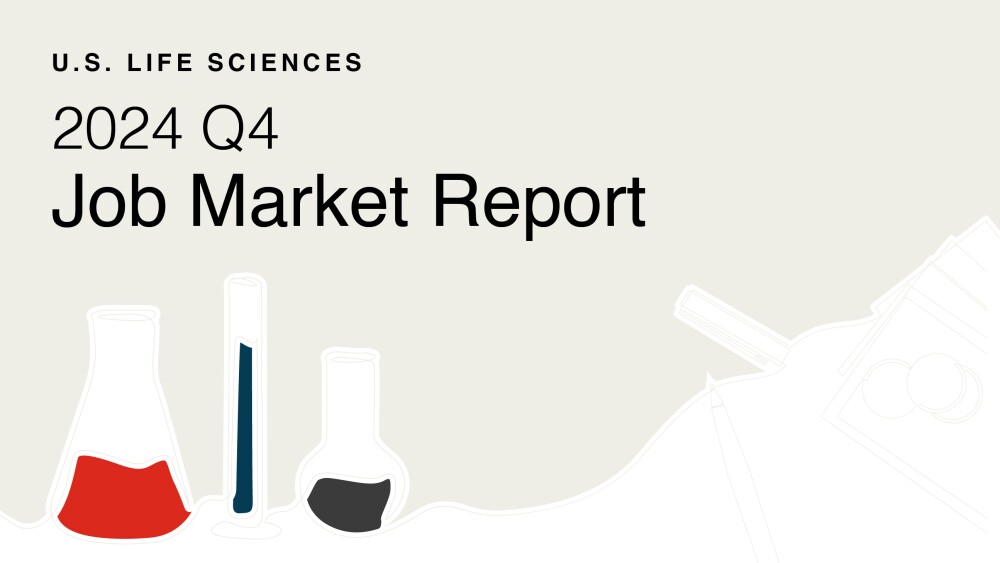The trauma market is expected to reach a growth rate (CAGR) of 5.78% during 2024-2034. The market is driven by significant advancements in technological innovations and an increasing prevalence of traumatic injuries. Additionally, there is a growing emphasis on personalized medicine, with developments in biologics and regenerative therapies offering tailored treatment options, which further contributes to the expansion of the market.
Technological Advancements in Medical Devices: Driving the Trauma Market
Medical technology innovations have drastically revolutionized the trauma industry, opening up new treatment options and improving patient care. Modern trauma care is increasingly reliant on advanced orthopedic devices, less invasive surgical instruments, and cutting-edge diagnostic technologies. These innovations are resulting in increased surgical accuracy, shorter recuperation periods, and better overall patient outcomes. One of the most important areas for innovation is orthopedic implants and fracture-fixing devices. Contemporary implants are made of biocompatible materials like titanium and sophisticated polymers, which provide improved strength and compatibility with human tissue. These materials lower the risk of problems and encourage speedier recovery. Furthermore, the design of these implants has improved in anatomical precision, allowing for better fitting and more natural mobility after surgery. Minimally invasive surgical procedures have also made major advances. These procedures, which include arthroscopy and laparoscopic surgery, use smaller incisions, resulting in less blood loss, a decreased risk of infection, and shorter recovery times. The use of real-time imaging technology, such as 3D imaging and intraoperative navigation systems, improves the precision of these treatments, making surgical interventions as accurate and effective as possible.
Request a PDF Sample Report: https://www.imarcgroup.com/trauma-market/requestsample
Furthermore, advances in diagnostic technology are playing an important role in trauma treatment. High-resolution imaging modalities, such as CT scans, MRIs, and portable ultrasound devices, offer extensive information on the degree of damage. These instruments enable quick and precise diagnosis, resulting in prompt and suitable therapeutic actions. Robotics is another innovative sector in the trauma business. Robotic-assisted operations provide exceptional precision, enabling surgeons to conduct difficult procedures with more control and accuracy. These devices can reduce human error and enhance surgical results, especially in complex trauma situations. Medical gadget developments are transforming the trauma industry. The combination of novel materials, minimally invasive methods, enhanced imaging, and robots is redefining trauma treatment, resulting in better patient experiences and results. As technology continues to evolve, it holds the promise of further enhancing the effectiveness and efficiency of trauma treatments.
Growth of Regenerative Medicine: Contributing to Market Expansion
The growth of regenerative medicine in the trauma market is revolutionizing how injuries are treated, offering innovative solutions that enhance the body’s natural healing processes. Regenerative medicine focuses on repairing, replacing, and regenerating damaged tissues and organs, thereby addressing the root causes of trauma rather than merely managing symptoms. This approach has led to significant advancements in patient outcomes, with faster recovery times and improved functionality. One of the primary drivers of this growth is the development of stem cell therapy. Stem cells have the unique ability to differentiate into various cell types, making them ideal for repairing damaged tissues. In trauma care, stem cell treatments are being used to regenerate bone, cartilage, and muscle tissues. Clinical trials have shown promising results, with patients experiencing reduced pain, improved mobility, and faster recovery compared to traditional treatments. This has led to increased adoption of stem cell therapies in both acute and chronic trauma cases.
Another significant advancement is the use of biomaterials and scaffolds that support tissue regeneration. These materials, often bioengineered to mimic the body’s extracellular matrix, provide a structure for new tissue to grow. When implanted in injured areas, they promote cell attachment and proliferation, leading to effective tissue regeneration. Innovations in this area include 3D-printed scaffolds that are customized to the patient’s specific injury, enhancing the precision and effectiveness of the treatment. Growth factors and biologics are also playing a crucial role in regenerative medicine. These substances, which include proteins and hormones, are used to stimulate the body’s healing response. For example, platelet-rich plasma (PRP) therapy involves injecting concentrated platelets from the patient’s own blood into the injured area, releasing growth factors that accelerate tissue repair and regeneration. The growth of regenerative medicine in the trauma market is driven by advancements in stem cell therapy, biomaterials, and biologics. These innovations are transforming trauma care, offering treatments that not only alleviate symptoms but also promote true healing and recovery. As research and technology continue to evolve, regenerative medicine is set to become a cornerstone of trauma treatment, significantly enhancing patient outcomes.
Integration of Digital Health Technologies:
The integration of digital health technologies in the trauma market is significantly transforming patient care by enhancing diagnosis, treatment, and post-operative management. Digital health encompasses a range of technologies, including telemedicine, electronic health records (EHRs), wearable devices, and artificial intelligence (AI), all of which are driving improvements in the efficiency and effectiveness of trauma care. Telemedicine is revolutionizing access to trauma care, particularly in remote or underserved areas. Through telemedicine platforms, patients can receive immediate consultations and assessments from trauma specialists, regardless of their location. This capability is crucial in emergencies where timely medical intervention can drastically improve outcomes. Virtual follow-ups and rehabilitation sessions also ensure continuous care, reducing the need for frequent hospital visits and allowing patients to recover in the comfort of their homes.
Electronic health records (EHRs) are another critical component of digital health technologies in the trauma market. EHRs provide a comprehensive and accessible record of a patient’s medical history, facilitating better coordination among healthcare providers. This integrated approach ensures that trauma patients receive cohesive and informed care, reducing the risk of medical errors and improving treatment outcomes. The seamless sharing of patient information also supports more efficient and accurate decision-making processes. Wearable devices and remote monitoring technologies are enhancing the management of trauma patients by providing real-time data on vital signs and physical activity. These devices can alert healthcare providers to potential complications early, enabling timely interventions. For instance, continuous monitoring of heart rate, blood pressure, and oxygen levels can detect signs of distress or infection, prompting immediate medical response and preventing further complications. Artificial intelligence (AI) is also making significant strides in trauma care. AI algorithms can analyze vast amounts of patient data to predict outcomes, personalize treatment plans, and even assist in diagnostic imaging. Machine learning models are being used to identify patterns and trends that might be missed by human clinicians, leading to more accurate diagnoses and better-targeted treatments.
Buy Full Report: https://www.imarcgroup.com/checkout?id=8719&method=587
Leading Companies in the Trauma Market:
The market research report by IMARC encompasses a comprehensive analysis of the competitive landscape in the market. Across the global trauma market, several leading companies are at the forefront of driving innovation through continuous advancement in new products and technologies that enhance the quality of trauma care and improve patient outcomes. Some of the major players including Humacyte, Athersys and Lineage Cell Therapeutics, have been investing heavily in their manufacturing capacities in recent months.
Humacyte has recently achieved significant milestones with its Human Acellular Vessel (HAV) in the trauma market. The company completed enrollment for its Phase 2/3 V005 trial, aimed at evaluating the efficacy of HAV for vascular trauma repair. This trial's positive results support the potential of HAV to improve treatment outcomes for patients suffering from major traumatic injuries. The study reported that the HAV showed a 30-day secondary patency rate of 93.8% and a 0.0% rate of both amputation and infection, compared to 20.6% and 8.9%, respectively, for synthetic grafts
Athersys Inc. is advancing its MultiStem cell therapy within the trauma market, focusing on its potential to improve outcomes for patients with severe traumatic injuries. The company has initiated the third and final cohort of its Phase 2 MATRICS-1 trial, which aims to evaluate the safety and effectiveness of MultiStem for preventing and treating complications following hemorrhagic trauma.
Apart from this, Lineage Cell Therapeutics has made significant strides with its OPC1 cell therapy, particularly in the context of spinal cord injuries (SCI). The company recently announced the FDA clearance of an Investigational New Drug (IND) amendment for OPC1. This clearance allows Lineage to proceed with its DOSED clinical study, which aims to evaluate the safety and utility of a novel spinal cord delivery device for administering OPC1 to both subacute and chronic SCI patients.
Request for Customization: https://www.imarcgroup.com/request?type=report&id=8719&flag=E
Regional Analysis:
The major markets for trauma include the United States, Germany, France, the United Kingdom, Italy, Spain, and Japan. According to projections by IMARC, the United States has the largest patient pool for trauma while also representing the biggest market for its treatment. This can be attributed to technological advancements, strategic collaborations, and regulatory support. These developments are poised to significantly improve the standard of care for trauma patients, offering more precise, personalized, and effective treatment options.
Moreover, the growing use of advanced biomaterials and 3D printing in trauma surgery, which allow the creation of customized implants and prosthetics, can significantly improve the fit and functionality of patients. For example, 3D-printed implants tailored to a patient’s specific anatomy are becoming more common, offering better integration and reduced risk of complications.
Besides this, strategic partnerships and acquisitions are also shaping the market. Major companies like Johnson & Johnson, Stryker, and Zimmer Biomet are actively pursuing collaborations with tech firms and startups to integrate cutting-edge technologies into their product lines. These partnerships are driving innovation and expanding the capabilities of trauma care solutions across the country.
Key information covered in the report.
Base Year: 2023
Historical Period: 2018-2023
Market Forecast: 2024-2034
Countries Covered
This report offers a comprehensive analysis of current trauma marketed drugs and late-stage pipeline drugs.
In-Market Drugs
IMARC Group Offer Other Reports:
B-Cell Non-Hodgkin Lymphoma Market: The 7 major B-cell non-hodgkin lymphoma market is expected to exhibit a CAGR of 5.83%during the forecast period from 2024 to 2034.
Listeriosis Market: The 7 major listeriosis market is expected to exhibit a CAGR of 4.08% during the forecast period from 2024 to 2034.
Uterine Fibroids Market: The 7 major uterine fibroids market is expected to exhibit a CAGR of 2.99% during the forecast period from 2024 to 2034.
Acoustic Neuroma Market: The 7 major acoustic neuroma market is expected to exhibit a CAGR of 5.61% during the forecast period from 2024 to 2034.
Biliary Tract Neoplasms Market: The 7 major biliary tract neoplasms market is expected to exhibit a CAGR of 7.21%during the forecast period from 2024 to 2034.
Neuropathic Pain Market: The 7 major neuropathic pain market reached a value of US$ 5.5 Billion in 2023 and projected the 7MM to reach US$ 8.1 Billion by 2034, exhibiting a growth rate (CAGR) of 3.7% during the forecast period from 2024 to 2034.
Clostridium Difficile Infection Market: The 7 major clostridium difficile infection market reached a value of US$ 9.0 Billion in 2023 and projected the 7MM to reach US$ 14.9 Billion by 2034, exhibiting a growth rate (CAGR) of 4.7% during the forecast period from 2024 to 2034.
Cardiac Arrhythmias Market: The 7 major cardiac arrhythmias market reached a value of US$ 4.9 Billion in 2023 and projected the 7MM to reach US$ 8.0 Billion by 2034, exhibiting a growth rate (CAGR) of 4.57%during the forecast period from 2024 to 2034.
Contact US
IMARC Group
134 N 4th St. Brooklyn, NY 11249, USA
Email: Sales@imarcgroup.com
Tel No:(D) +91 120 433 0800
Phone Number: - +1 631 791 1145, +91-120-433-0800
Technological Advancements in Medical Devices: Driving the Trauma Market
Medical technology innovations have drastically revolutionized the trauma industry, opening up new treatment options and improving patient care. Modern trauma care is increasingly reliant on advanced orthopedic devices, less invasive surgical instruments, and cutting-edge diagnostic technologies. These innovations are resulting in increased surgical accuracy, shorter recuperation periods, and better overall patient outcomes. One of the most important areas for innovation is orthopedic implants and fracture-fixing devices. Contemporary implants are made of biocompatible materials like titanium and sophisticated polymers, which provide improved strength and compatibility with human tissue. These materials lower the risk of problems and encourage speedier recovery. Furthermore, the design of these implants has improved in anatomical precision, allowing for better fitting and more natural mobility after surgery. Minimally invasive surgical procedures have also made major advances. These procedures, which include arthroscopy and laparoscopic surgery, use smaller incisions, resulting in less blood loss, a decreased risk of infection, and shorter recovery times. The use of real-time imaging technology, such as 3D imaging and intraoperative navigation systems, improves the precision of these treatments, making surgical interventions as accurate and effective as possible.
Request a PDF Sample Report: https://www.imarcgroup.com/trauma-market/requestsample
Furthermore, advances in diagnostic technology are playing an important role in trauma treatment. High-resolution imaging modalities, such as CT scans, MRIs, and portable ultrasound devices, offer extensive information on the degree of damage. These instruments enable quick and precise diagnosis, resulting in prompt and suitable therapeutic actions. Robotics is another innovative sector in the trauma business. Robotic-assisted operations provide exceptional precision, enabling surgeons to conduct difficult procedures with more control and accuracy. These devices can reduce human error and enhance surgical results, especially in complex trauma situations. Medical gadget developments are transforming the trauma industry. The combination of novel materials, minimally invasive methods, enhanced imaging, and robots is redefining trauma treatment, resulting in better patient experiences and results. As technology continues to evolve, it holds the promise of further enhancing the effectiveness and efficiency of trauma treatments.
Growth of Regenerative Medicine: Contributing to Market Expansion
The growth of regenerative medicine in the trauma market is revolutionizing how injuries are treated, offering innovative solutions that enhance the body’s natural healing processes. Regenerative medicine focuses on repairing, replacing, and regenerating damaged tissues and organs, thereby addressing the root causes of trauma rather than merely managing symptoms. This approach has led to significant advancements in patient outcomes, with faster recovery times and improved functionality. One of the primary drivers of this growth is the development of stem cell therapy. Stem cells have the unique ability to differentiate into various cell types, making them ideal for repairing damaged tissues. In trauma care, stem cell treatments are being used to regenerate bone, cartilage, and muscle tissues. Clinical trials have shown promising results, with patients experiencing reduced pain, improved mobility, and faster recovery compared to traditional treatments. This has led to increased adoption of stem cell therapies in both acute and chronic trauma cases.
Another significant advancement is the use of biomaterials and scaffolds that support tissue regeneration. These materials, often bioengineered to mimic the body’s extracellular matrix, provide a structure for new tissue to grow. When implanted in injured areas, they promote cell attachment and proliferation, leading to effective tissue regeneration. Innovations in this area include 3D-printed scaffolds that are customized to the patient’s specific injury, enhancing the precision and effectiveness of the treatment. Growth factors and biologics are also playing a crucial role in regenerative medicine. These substances, which include proteins and hormones, are used to stimulate the body’s healing response. For example, platelet-rich plasma (PRP) therapy involves injecting concentrated platelets from the patient’s own blood into the injured area, releasing growth factors that accelerate tissue repair and regeneration. The growth of regenerative medicine in the trauma market is driven by advancements in stem cell therapy, biomaterials, and biologics. These innovations are transforming trauma care, offering treatments that not only alleviate symptoms but also promote true healing and recovery. As research and technology continue to evolve, regenerative medicine is set to become a cornerstone of trauma treatment, significantly enhancing patient outcomes.
Integration of Digital Health Technologies:
The integration of digital health technologies in the trauma market is significantly transforming patient care by enhancing diagnosis, treatment, and post-operative management. Digital health encompasses a range of technologies, including telemedicine, electronic health records (EHRs), wearable devices, and artificial intelligence (AI), all of which are driving improvements in the efficiency and effectiveness of trauma care. Telemedicine is revolutionizing access to trauma care, particularly in remote or underserved areas. Through telemedicine platforms, patients can receive immediate consultations and assessments from trauma specialists, regardless of their location. This capability is crucial in emergencies where timely medical intervention can drastically improve outcomes. Virtual follow-ups and rehabilitation sessions also ensure continuous care, reducing the need for frequent hospital visits and allowing patients to recover in the comfort of their homes.
Electronic health records (EHRs) are another critical component of digital health technologies in the trauma market. EHRs provide a comprehensive and accessible record of a patient’s medical history, facilitating better coordination among healthcare providers. This integrated approach ensures that trauma patients receive cohesive and informed care, reducing the risk of medical errors and improving treatment outcomes. The seamless sharing of patient information also supports more efficient and accurate decision-making processes. Wearable devices and remote monitoring technologies are enhancing the management of trauma patients by providing real-time data on vital signs and physical activity. These devices can alert healthcare providers to potential complications early, enabling timely interventions. For instance, continuous monitoring of heart rate, blood pressure, and oxygen levels can detect signs of distress or infection, prompting immediate medical response and preventing further complications. Artificial intelligence (AI) is also making significant strides in trauma care. AI algorithms can analyze vast amounts of patient data to predict outcomes, personalize treatment plans, and even assist in diagnostic imaging. Machine learning models are being used to identify patterns and trends that might be missed by human clinicians, leading to more accurate diagnoses and better-targeted treatments.
Buy Full Report: https://www.imarcgroup.com/checkout?id=8719&method=587
Leading Companies in the Trauma Market:
The market research report by IMARC encompasses a comprehensive analysis of the competitive landscape in the market. Across the global trauma market, several leading companies are at the forefront of driving innovation through continuous advancement in new products and technologies that enhance the quality of trauma care and improve patient outcomes. Some of the major players including Humacyte, Athersys and Lineage Cell Therapeutics, have been investing heavily in their manufacturing capacities in recent months.
Humacyte has recently achieved significant milestones with its Human Acellular Vessel (HAV) in the trauma market. The company completed enrollment for its Phase 2/3 V005 trial, aimed at evaluating the efficacy of HAV for vascular trauma repair. This trial's positive results support the potential of HAV to improve treatment outcomes for patients suffering from major traumatic injuries. The study reported that the HAV showed a 30-day secondary patency rate of 93.8% and a 0.0% rate of both amputation and infection, compared to 20.6% and 8.9%, respectively, for synthetic grafts
Athersys Inc. is advancing its MultiStem cell therapy within the trauma market, focusing on its potential to improve outcomes for patients with severe traumatic injuries. The company has initiated the third and final cohort of its Phase 2 MATRICS-1 trial, which aims to evaluate the safety and effectiveness of MultiStem for preventing and treating complications following hemorrhagic trauma.
Apart from this, Lineage Cell Therapeutics has made significant strides with its OPC1 cell therapy, particularly in the context of spinal cord injuries (SCI). The company recently announced the FDA clearance of an Investigational New Drug (IND) amendment for OPC1. This clearance allows Lineage to proceed with its DOSED clinical study, which aims to evaluate the safety and utility of a novel spinal cord delivery device for administering OPC1 to both subacute and chronic SCI patients.
Request for Customization: https://www.imarcgroup.com/request?type=report&id=8719&flag=E
Regional Analysis:
The major markets for trauma include the United States, Germany, France, the United Kingdom, Italy, Spain, and Japan. According to projections by IMARC, the United States has the largest patient pool for trauma while also representing the biggest market for its treatment. This can be attributed to technological advancements, strategic collaborations, and regulatory support. These developments are poised to significantly improve the standard of care for trauma patients, offering more precise, personalized, and effective treatment options.
Moreover, the growing use of advanced biomaterials and 3D printing in trauma surgery, which allow the creation of customized implants and prosthetics, can significantly improve the fit and functionality of patients. For example, 3D-printed implants tailored to a patient’s specific anatomy are becoming more common, offering better integration and reduced risk of complications.
Besides this, strategic partnerships and acquisitions are also shaping the market. Major companies like Johnson & Johnson, Stryker, and Zimmer Biomet are actively pursuing collaborations with tech firms and startups to integrate cutting-edge technologies into their product lines. These partnerships are driving innovation and expanding the capabilities of trauma care solutions across the country.
Key information covered in the report.
Base Year: 2023
Historical Period: 2018-2023
Market Forecast: 2024-2034
Countries Covered
- United States
- Germany
- France
- United Kingdom
- Italy
- Spain
- Japan
- Historical, current, and future epidemiology scenario
- Historical, current, and future performance of the trauma market
- Historical, current, and future performance of various therapeutic categories in the market
- Sales of various drugs across the trauma market
- Reimbursement scenario in the market
- In-market and pipeline drugs
This report offers a comprehensive analysis of current trauma marketed drugs and late-stage pipeline drugs.
In-Market Drugs
- Drug Overview
- Mechanism of Action
- Regulatory Status
- Clinical Trial Results
- Drug Uptake and Market Performance
- Drug Overview
- Mechanism of Action
- Regulatory Status
- Clinical Trial Results
- Drug Uptake and Market Performance
IMARC Group Offer Other Reports:
B-Cell Non-Hodgkin Lymphoma Market: The 7 major B-cell non-hodgkin lymphoma market is expected to exhibit a CAGR of 5.83%during the forecast period from 2024 to 2034.
Listeriosis Market: The 7 major listeriosis market is expected to exhibit a CAGR of 4.08% during the forecast period from 2024 to 2034.
Uterine Fibroids Market: The 7 major uterine fibroids market is expected to exhibit a CAGR of 2.99% during the forecast period from 2024 to 2034.
Acoustic Neuroma Market: The 7 major acoustic neuroma market is expected to exhibit a CAGR of 5.61% during the forecast period from 2024 to 2034.
Biliary Tract Neoplasms Market: The 7 major biliary tract neoplasms market is expected to exhibit a CAGR of 7.21%during the forecast period from 2024 to 2034.
Neuropathic Pain Market: The 7 major neuropathic pain market reached a value of US$ 5.5 Billion in 2023 and projected the 7MM to reach US$ 8.1 Billion by 2034, exhibiting a growth rate (CAGR) of 3.7% during the forecast period from 2024 to 2034.
Clostridium Difficile Infection Market: The 7 major clostridium difficile infection market reached a value of US$ 9.0 Billion in 2023 and projected the 7MM to reach US$ 14.9 Billion by 2034, exhibiting a growth rate (CAGR) of 4.7% during the forecast period from 2024 to 2034.
Cardiac Arrhythmias Market: The 7 major cardiac arrhythmias market reached a value of US$ 4.9 Billion in 2023 and projected the 7MM to reach US$ 8.0 Billion by 2034, exhibiting a growth rate (CAGR) of 4.57%during the forecast period from 2024 to 2034.
Contact US
IMARC Group
134 N 4th St. Brooklyn, NY 11249, USA
Email: Sales@imarcgroup.com
Tel No:(D) +91 120 433 0800
Phone Number: - +1 631 791 1145, +91-120-433-0800





